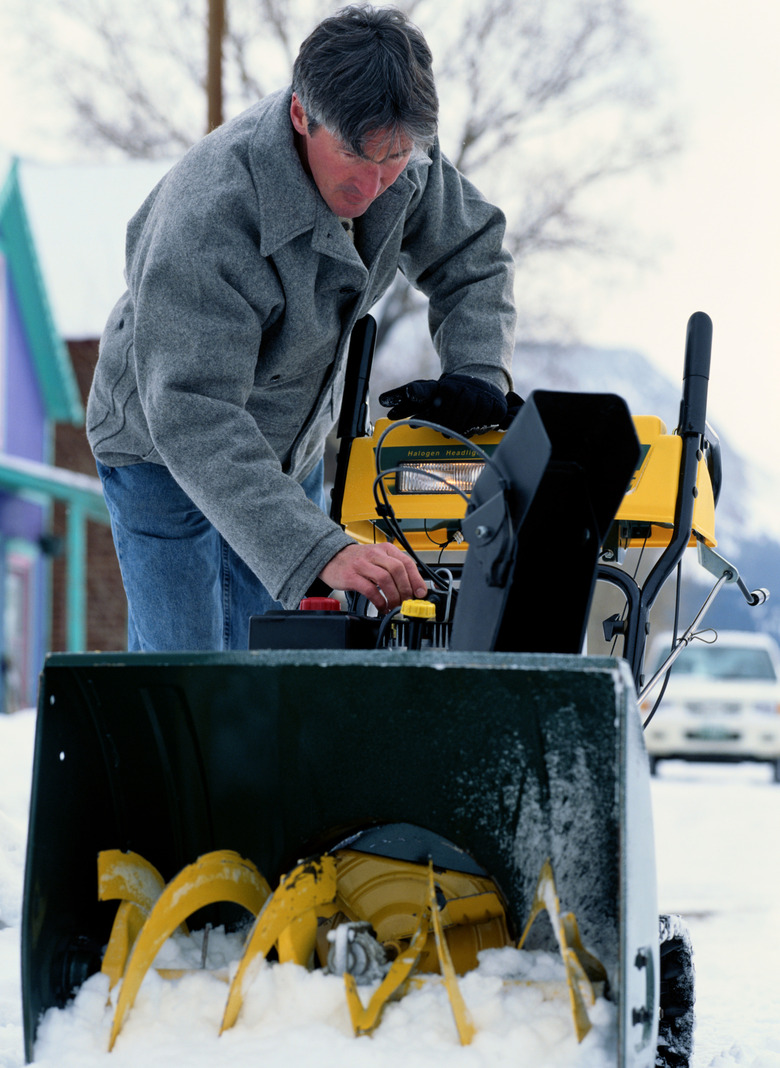My Troy Bilt Snowblower Is Stalled Out & Will Not Start
Troy-Bilt snowblowers come in both gas-powered and electric models. Regardless of the type, it's possible for the snowblower to have difficulty starting or maintaining combustion during operation. While this can be a major inconvenience during a heavy snow, troubleshooting the starting operation for both types can reveal the problem without taking your snowblower to an appliance repair professional.
Gas Starting Position
Every Troy-Bilt snowblower has a pre-operation configuration that must be in place before starting. Most models require that the ignition key be switched to "on" or "run." The choke should be fully open for cold-weather starts. If your model has a fuel shut-off valve, ensure it is rotated to the "on" position. Set the throttle on "fast."
- Troy-Bilt snowblowers come in both gas-powered and electric models.
- If your model has a fuel shut-off valve, ensure it is rotated to the "on" position.
Electric Start
Electrically powered Troy-Bilt snow throwers also have starting requirements. Ensure that the power cord is securely attached to both the receptacle and the snow thrower. The receptacle must be a three-pronged 110-volt outlet. Once the engine start button is depressed, release it when the snow thrower starts. If the starter gets too hot, it will stop. In this case, let it cool off for several minutes before trying to restart the engine.
Fuel
Fuel problems can prevent gas-powered snow throwers from starting. The choke knob must be fully opened for a cold-weather start. If you don't shut it off after the start, you run the risk of flooding the engine, causing stalls and combustion interruption. The same can happen if you open the choke when the engine is already warmed up. The primer, which injects fuel into the carburetor, must also be depressed four or five times before starting up or combustion won't occur. If you press the primer too many times during a cold-weather start, close the choke and then try to start it.
- Electrically powered Troy-Bilt snow throwers also have starting requirements.
- If you don't shut it off after the start, you run the risk of flooding the engine, causing stalls and combustion interruption.
Spark Plug
Gas-powered Troy-Bilt snow throwers have spark plugs that ignite the fuel-air mixture for combustion. A faulty spark plug will inhibit the start or cause the engine to run intermittently. Inspect the wire and spark plug condition before every operation. Look for any obvious damage like tears in the wiring or carbon build up on the spark plug. For every 25 hours of operation, check the spark plug gap setting according to your model's recommendation. Replace the spark plug every 100 hours of use.
